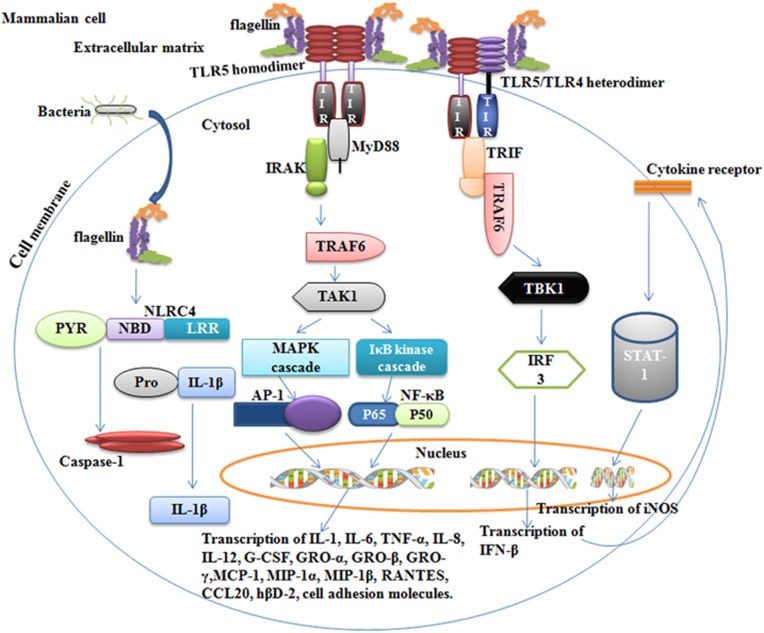Figure 1.
Signal transduction by flagellin in mammalian cells. Immune cells respond to extracellular monomeric flagellin through either TLR5 homodimer or heterodimer complexes, resulting in the transcription of a variety of genes that are important for the proper stimulation of immune cells. Signaling through TLR5 occurs through a MyD88-dependent adapter molecule that passes the signal to the MAPK and IkB cascades via IRAK, TRAF6 and TAK1. The MAPK and IkB cascades result in the induction of transcription factors AP-1 and NF-kB, respectively. These two transcription factors induce a variety of genes involved in innate and adaptive immunity. Signaling through TLR5/TLR4 is MyD88-independent and occurs via the IRF3 pathway, which results in the production of IFN-β. Subsequently, IFN-β induces iNOS gene transcription through the activation of STAT1, which culminates in the production of NO. However, when intracellular flagellin is introduced into the host cell cytoplasm via the type III secretory system by some bacteria, it is detected by NLRC4, which culminates in the secretion of IL-1 β via active caspase-1. AP-1, Activator protein-1; GRO, growth-related oncogene; hBD, human beta defensins; IRF3, interferon response factor 3; IRAK, IL-1 receptor associated kinase; LRR, leucine-rich repeats; MAPK, mitogen-activated protein kinase; MCP, monocyte chemoattractant protein; MIP, macrophage inflammatory protein; MyD88, myeloid differentiation factor 88; NBD, nucleotide-binding domain; NF-κB, nuclear factor ‘kappa-light-chain-enhancer’ of activated B cells; PYR, pyrin domain; TAK1, transforming growth factor-beta-activated kinase 1; TBK1. TANK-binding-kinase-1; TLR, Toll-like receptor; TRAF6, TNF receptor associated factor 6; TRIF, TIR domain containing adapter inducing interferon-β STAT1, signal transducer and activator of transcription 1.

